1
Reconstruction of Penetanguishene Naval and Military Establishments, 1817-18561966
Penetanguishene, Ontario, Canada
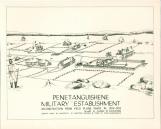 Credits:
Credits:Museum of Ontario Archaeology
2
After completing excavations at Sainte-Marie I in 1951, Wilf and Elsie turned their attention to the Penetanguishene Naval and Military Establishments. This would prove to occupy a significant portion of their joint efforts for thesucceeding twenty years. Of all the projects in which they were involved, Penetanguishene is perhaps the least understood. On the one hand it is the most extensively documented in terms of available archival research and
archaeological data. Yet on the other hand it is the most poorly known in terms of published reports. The sites have been meticulously recreated and are now operated as a major educational facility known as "Discovery Harbour".
However, there remain today in the Jury archives at the London Museum of Archaeology stacks of files which contain a wealth of information which would provide the data for countless more stories to be told of the many important
events that transpired at, and people who visited the Establishments.
3
Wilf and Elsie excavating hospital at Penetanguishene Naval and Military Establishmentscirca 1960
Penetanguishene, Ontario, Canada
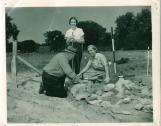 Credits:
Credits:Museum of Ontario Archaeology
4
"The site was chosen by the first lieutenant governor of Upper Canada in 1793: the Naval base was established in 1814 although construction commenced only in 1817; the military base in 1828. The Establishment was closed and handed over to the provincial authorities in 1856...Buildings were erected: a naval storehouse 100 by 50 feet and three stories high; a guard house; a sailor's barracks; offices for the clerk-in-charge and the store porter; residences for the commanding officer, a lieutenant, a surgeon, the clerk-in-charge and surveyors. There were also a soldiers' mess and military officer's house... a blacksmith shop, a saw pit, landing slips and varying number of artificers' houses... Most fascinating has been the information gathered from many sources concerning the lives and personalities of those who served there. They were seasoned veterans of Nelson's navy and many had fought with Wellington. They were men of colourful pasts, and men who went on to outstanding careers embracing every corner of the globe...To many visitors, even more interesting are logs and journals of the captains and masters of the early schooners attached to the base, the CONFIANCE, the SURPRISE, the NEWASH and the TECUMSETH... three Durham boats, the BEE, the WASP and the MOSQUITO, built at Nottawasaga in the Spring of 1817, were also attached to the post, as were bateaux, gigs, skiffs, jolly boats, whaleboats and cutters" (E. Jury 1990: 213:; 215-216).5
Wilf in an officer's uniform at Penetanguishene Naval and Military Establishmentscirca 1952
Penetanguishene, Ontario, Canada
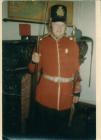 Credits:
Credits:Museum of Ontario Archaeology
6
When the project started in 1951, there was only one building of relevance standing on the property. This was the stone Officers' Quarters, which was restored, outfitted and opened as an interpretive museum. Over the next several years Wilf's archaeological excavations revealed buildings and features that previously completed archival research coupled with Elsie's own research had documented were there. The project thus resulted in a truly unique blend of archaeology and history, one in which archaeology was used to verify the written and pictorial record.7
Wilf at Penetanguishene Naval and Military Establishmentscirca 1970
Penetanguishene, Ontario, Canada
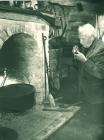 Credits:
Credits:Museum of Ontario Archaeology
8
In 1953 Wilf coordinated the raising of the hull of the schooner TECUMSETH from Penetanguishene Harbour. That ship had been built in 1815 and sank in 1833.9
Hull of the HMS TECUMSETH, built 1815 and sank 18331953
Penetanguishene, Ontario, Canada
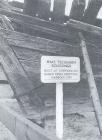 Credits:
Credits:Museum of Ontario Archaeology